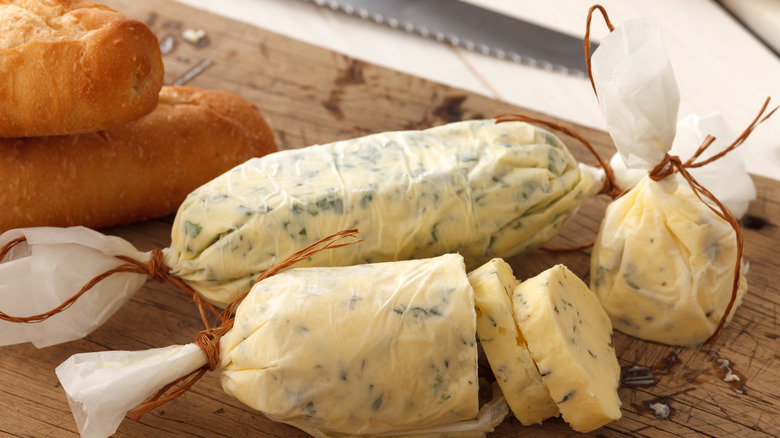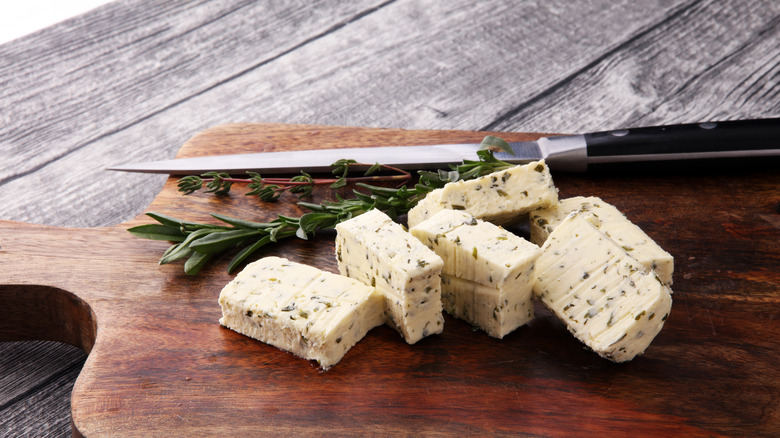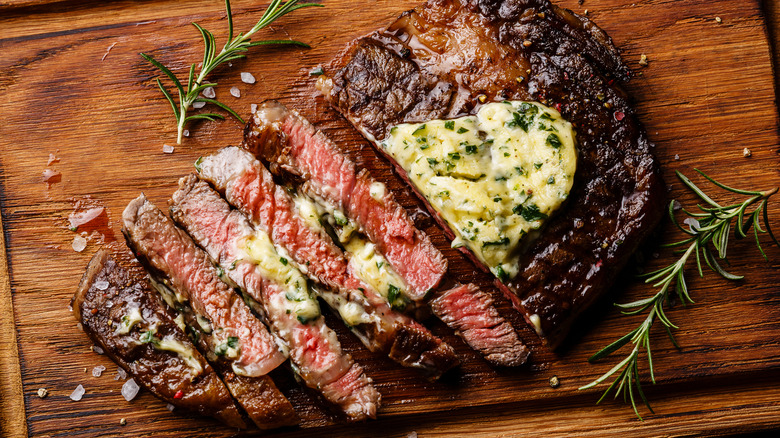The Enemy Of Perfectly Creamy Compound Butter? Overmixing
The act of making compound butter is a joy only rivaled by actually eating it. Simply mixing your favorite ingredients into the luscious dairy base transforms a simple stick into a versatile, adaptable ingredient that enhances everything it touches.
But as fun as the process of making compound butter can be, it's critical not to get carried away, as overmixing will destroy all that buttery goodness. Compound butter is an emulsion, which means it is subject to "breaking." Your butter will melt if you overmix it, and if it's too soft, it won't cream. When you churn beyond the point of no return, it can be hard or even impossible to correct.
Other factors can cause compound butter failure, too. Be careful not to incorporate ingredients that are too big, as hunks of food can prevent smooth, even distribution throughout. Also, too much liquid (like citrus juice or purée) will separate, leaving you with a pool of unincorporated flavor. And be aware of the temperature of your butter — it has to be just right (room temperature, not too firm, and not too soft) to get a perfectly creamed texture.
What is compound butter, and why use it?
Compound butter is a combination of unsalted butter and an added flavoring (think garlic, citrus zest, cheeses, herbs, spices, and so much more) whipped together into an airy, super tasty, and versatile spread. The key to this magic lies in the butterfat, a highly effective carrier of aroma and flavor.
Compound butters deliver a big taste with very little toil, and making them is a cinch. The ratio of butter to flavor will depend on what you include and may require a bit of trial and error, but fortunately, the method is pretty forgiving. You can create your compound concoction by hand, using a whisk or fork in a large bowl with a little elbow grease, or go for a more automated approach with an electric mixer (hand or stand). You'll want to make sure whatever bits you combine with your butter are small enough to get an even distribution throughout and won't feel too chunky when you spread it later.
Once your butter meets your taste and texture standards, you can store what you don't immediately use in the refrigerator for a few weeks, either in a container or rolled into a convenient log, which makes it an ideal make-ahead ingredient. If you always keep a few of these butters in your fridge, you'll never again worry about having a boring meal.
Flavors and ideas for your compound butter
One of the most fun parts of making compound butter is brainstorming your ingredients. Because butter is so adaptable and accommodating of such a vast range of flavors — from sweet to savory and just about anything in between — you can find inspiration and applications at every culinary turn.
Compound butter is a great way to highlight a single ingredient like a spice, fresh herb, or cheese. As a "finishing" butter, one of the most classic examples is a pat of blue cheese compound butter served atop a perfectly seared steak. You can take that iconic preparation a step further by adding herbs like tarragon or sage, or swap out the blue for goat cheese and add chives.
But the buttery fun doesn't stop with steak. Try garlic and basil butter tossed into fresh pasta, or lemon and herb melted over your favorite fish. You can make a more complex option like red chile garlic butter — perfect for grilled corn or even popcorn — or get spicy and sweet with a cinnamon sugar butter spread on sourdough toast. You can even use compound butter for baking purposes and infuse your favorite cookie recipe with chocolate compound butter.


